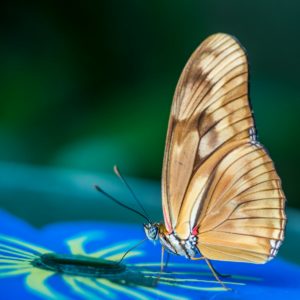She is one of the 1000 women proposed for the Nobel Peace Price 2005.
The beginning of her pedagogical work in Venezuela was in the San Judas Tadeu School of Faith and Joy, in Caracas, in a community marked by violence and insecurity. Immersed in popular education since 1976, she initiated, in 1993, the project Education for Peace, the aim of which was to involve the educational community in the resolution of conflicts. Since 1999, she has directed the Mother Emilia School of Maiquetía, in the State of Vargas, where she is the driving force behind the initiative Constructing Peace with Solidarity. Her name is María Inmaculada Lacarra.Máría Inmaculada Lacarra, born in Agreda-Soria, Spain, was a late arrival in the Lacarra-Cobrerizo family. She has only one sister. As a small child she experienced the effects of the Civil War. In spite of that, her childhood seems to have remained unaffected. “I was surrounded by great affection and love from my family, a poor, working family but one where, as I remember, we never lacked anything” … She says: « Solidarity and peace must be worked for from a base level, with openness and simplicity, looking with sincerity for the common good ». (1000peacewomen 1/2).
.
.
Sorry, no downloadable photo found of María Inmaculada Lacarra Cabrerizo, Venezuela
She works for the Mother Emilia School of Maiquetía, and for the San Judas Tadeu School of Faith and Joy, (both not named in the internet).
(1000peacewomen 2/2) … When she was 15 years old she entered the Congregation of the Hermanitas de los Pobres de Maiquetía in Spain. Her idea was to consecrate her life to God and to serve the people through education.
She arrived in Venezuela in 1972 and lived in Cerro La Cruz, in the House of San Judas Tadeo of Caracas. « It made a great impact on me. The first impression was of shock because of the inequalities and the differences that I saw that did not seem logical. I saw that women were very submissive. I was mostly worried about how to help the young girls, so that the circle of behaviour could be broken and what had been experienced by the mother and the daughter would not be experienced by the granddaughter « .
In 1993, when she was Director of the Education Unit of San Judas Tadeo, and facing the high levels of violence that affected the community, she initiated and promoted the project, Education for Peace. « I was very worried about the situation of the children and the families: How could we help people? But mainly I was concerned about finding a way to be welcomed into the families through the children « .
This initiative envisages an open school where the whole educational community participates. « We tried to incorporate the parents and representatives, to organize activities where the school went into the neighbourhood. In order to do that, we organized groups of young missionaries to visit all the houses ».
This initiative was planned to involve workshops, action in the streets and celebration of festivals in the most conflictive zones. It would include a constant effort to promote unity between the families and the teaching team.
Violence is a reality that cannot be ignored. With her vision of an integrated society, that reality may change. The builders of peace may prevail.
« Several things were planned, many things, and all of them were important; for example, that representatives of the community participated, that the teachers were so fully integrated that soon they would be the ones in charge, and would be able to incorporate the new people who arrived « .
With an ability to handle conflicts that seems to be natural, María Inmaculada believes that the building of peace must be based on the strength and local resources of the school and the community. “The project is a milestone that shows where we are going, a sample of what we are able to reach together when we are in agreement.
Of Maria Inmaculada we can recognize her conviction and dedication to the improvement of the quality of education for the children. Her approach does not ignore the reality of the violence, but tries to change its sphere of influence. « We began to work for peace in the school: we tried to change structures, to change this network that was drowning us, putting us within a circle of fear in which nobody dared to do anything ».
« The name of the project was first Educating for Peace, then it was called Constructing Peace from conflict and now it is called Constructing Peace from within the family, but it is still the same project ». The teachers and the community in general are able to use the concepts of Constructing Peace as a way to face violence, turning the participants into promoters and beneficiaries of the initiative.
« The contact with the ‘thugs’ was also very interesting because they taught us a lot… and, little by little, we broke down the taboos ». Maria Inmaculada also emphasizes the importance of people being able to release themselves from their own fears. « We must release all the fundamentalisms we have: We have many beliefs and apprehensions, and we consider them so important that we allow them to separate us ».
» The greatest service I can give my people is to help them to find the value we are missing the most: Peace. Because it will not come by magic: We have to build it”, she says with total conviction. Are there any challenges still left for you? She smiles and assures us, « all the challenges are still left « . (1000peacewomen).
Beside being named as nobel peace nominee, there are no other items in the internet about our peacewomen, María Inmaculada Lacarra Cabrerizo, Venezuela. But this means not, that her specific commitment should not be honnored on this blog.
